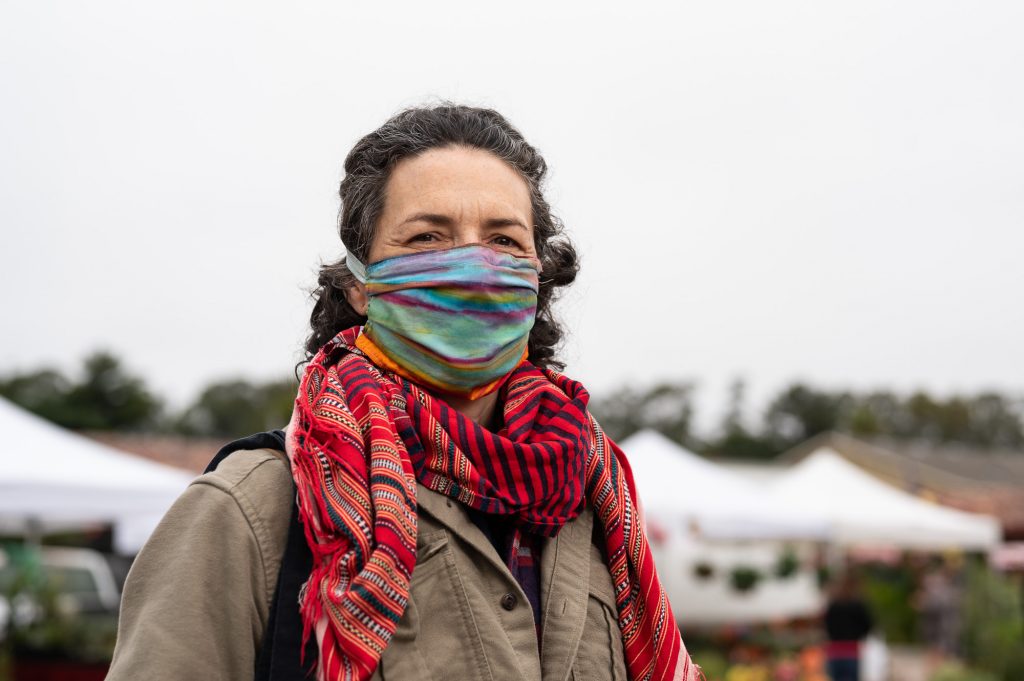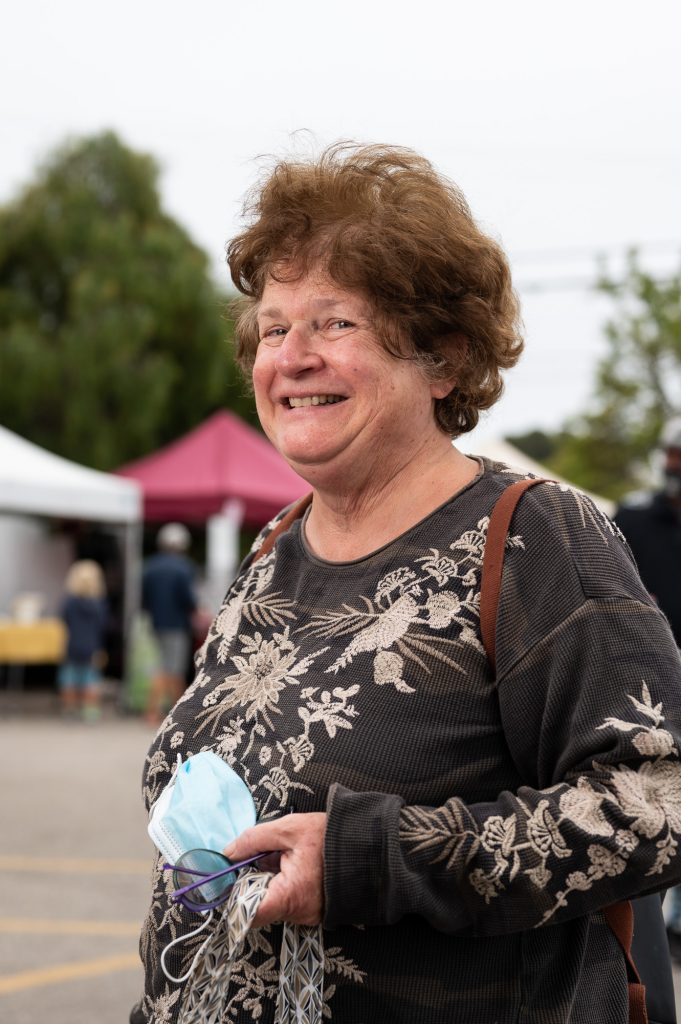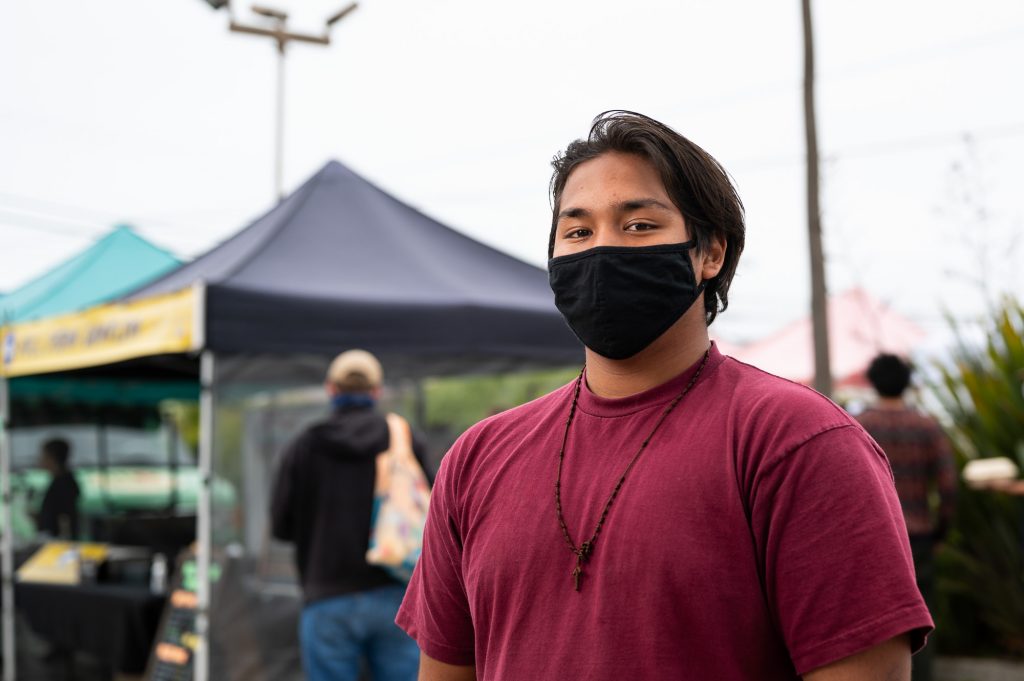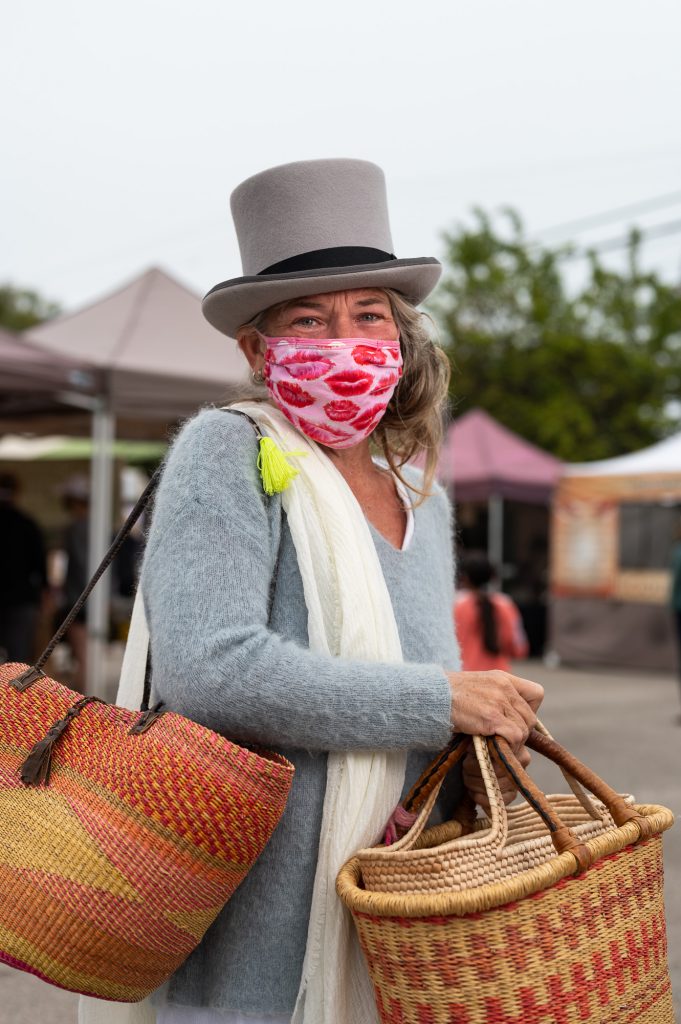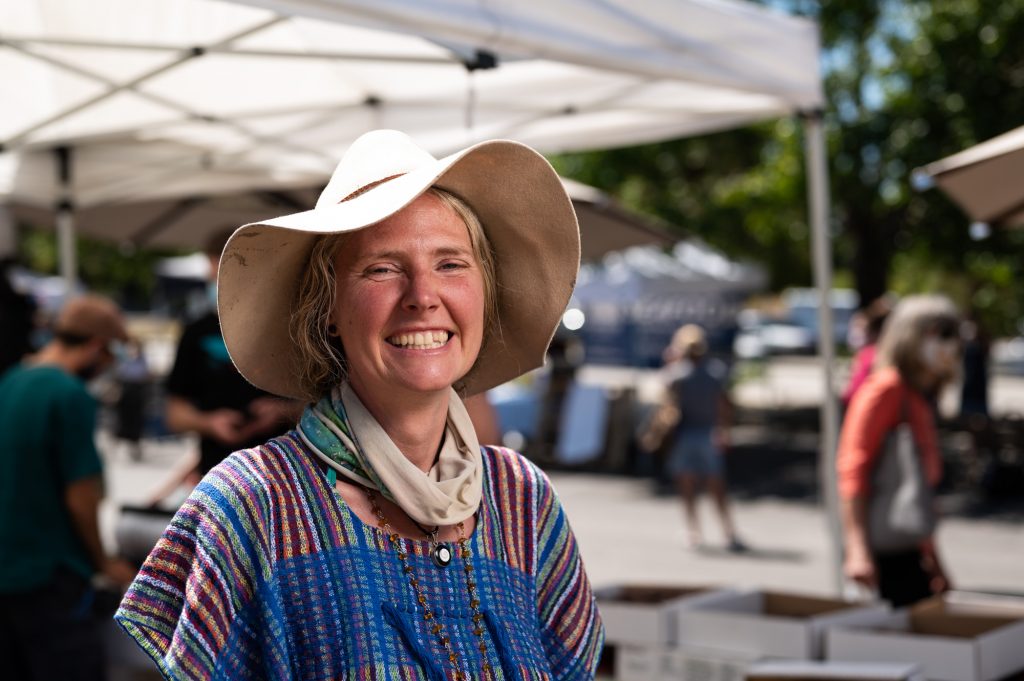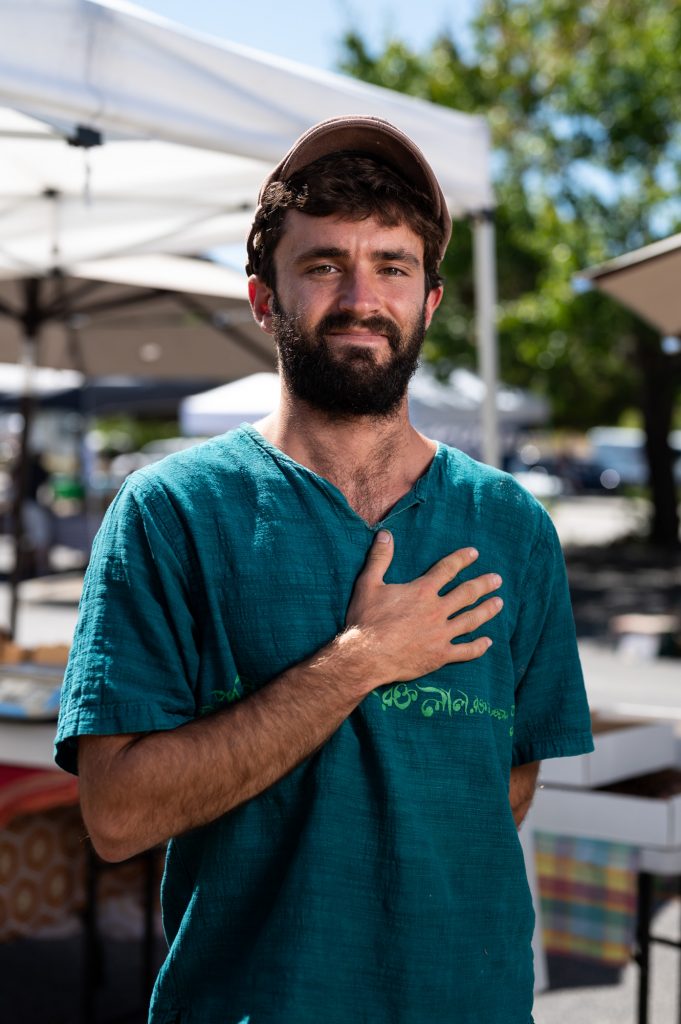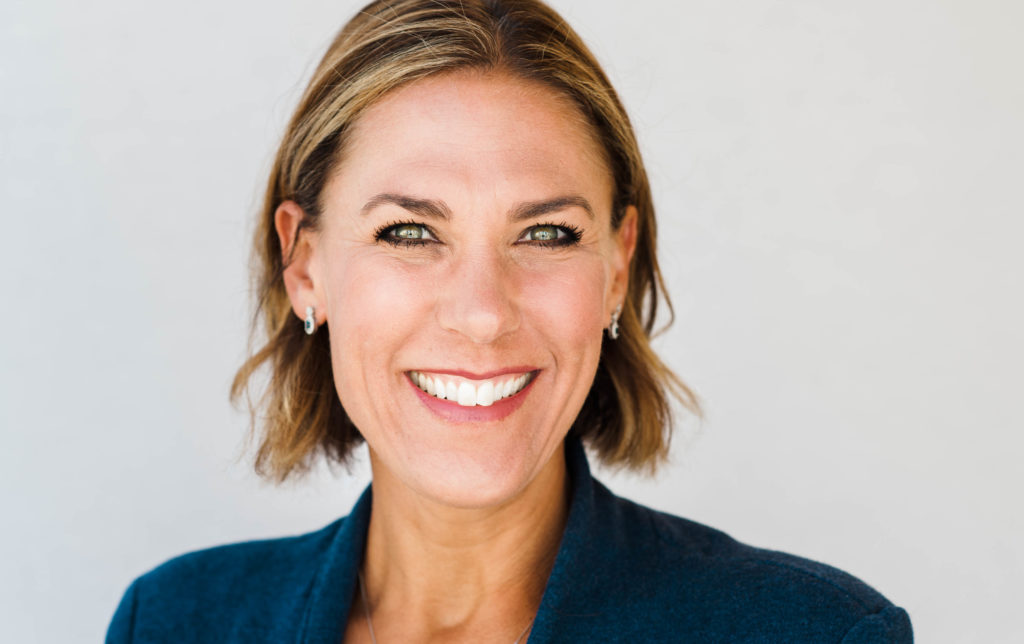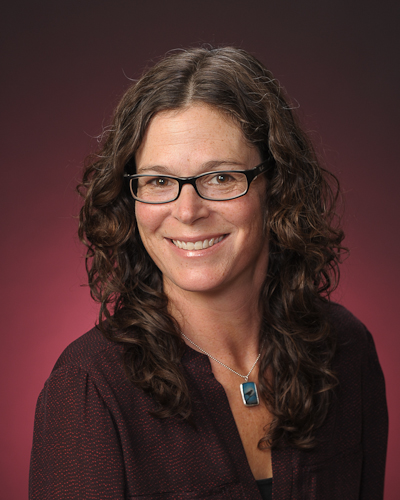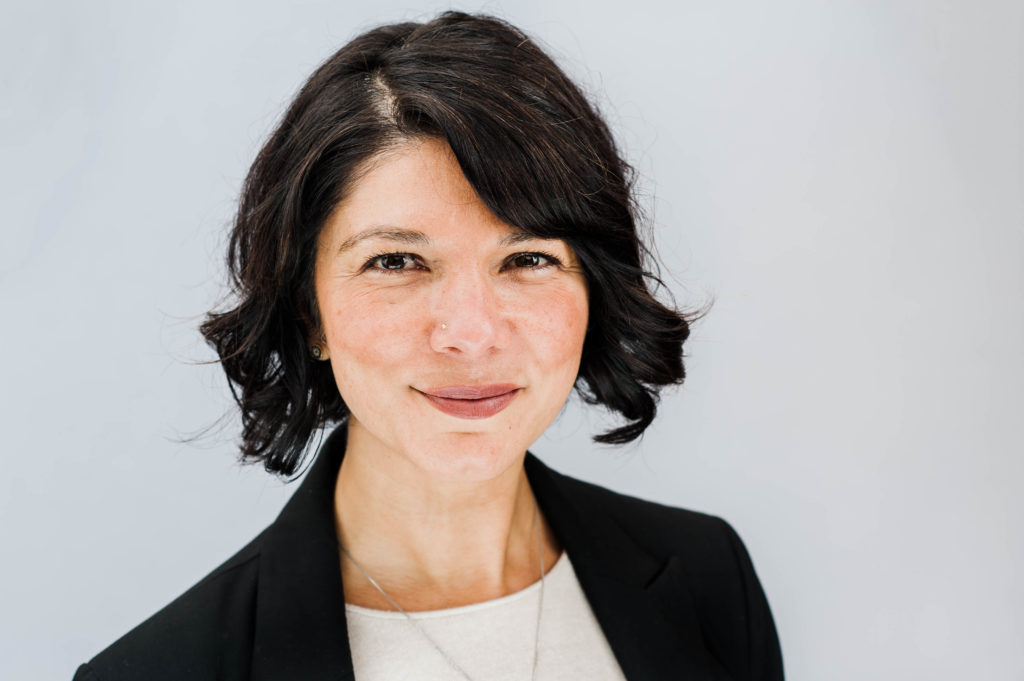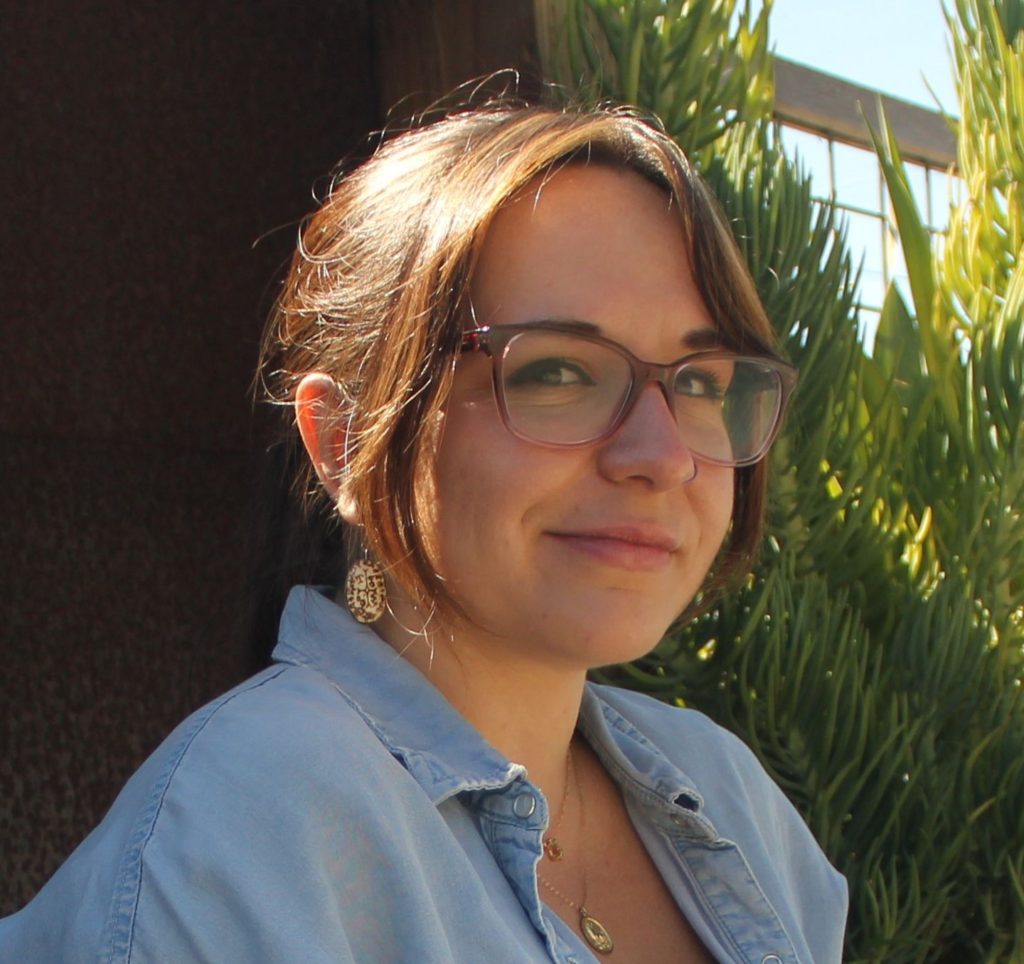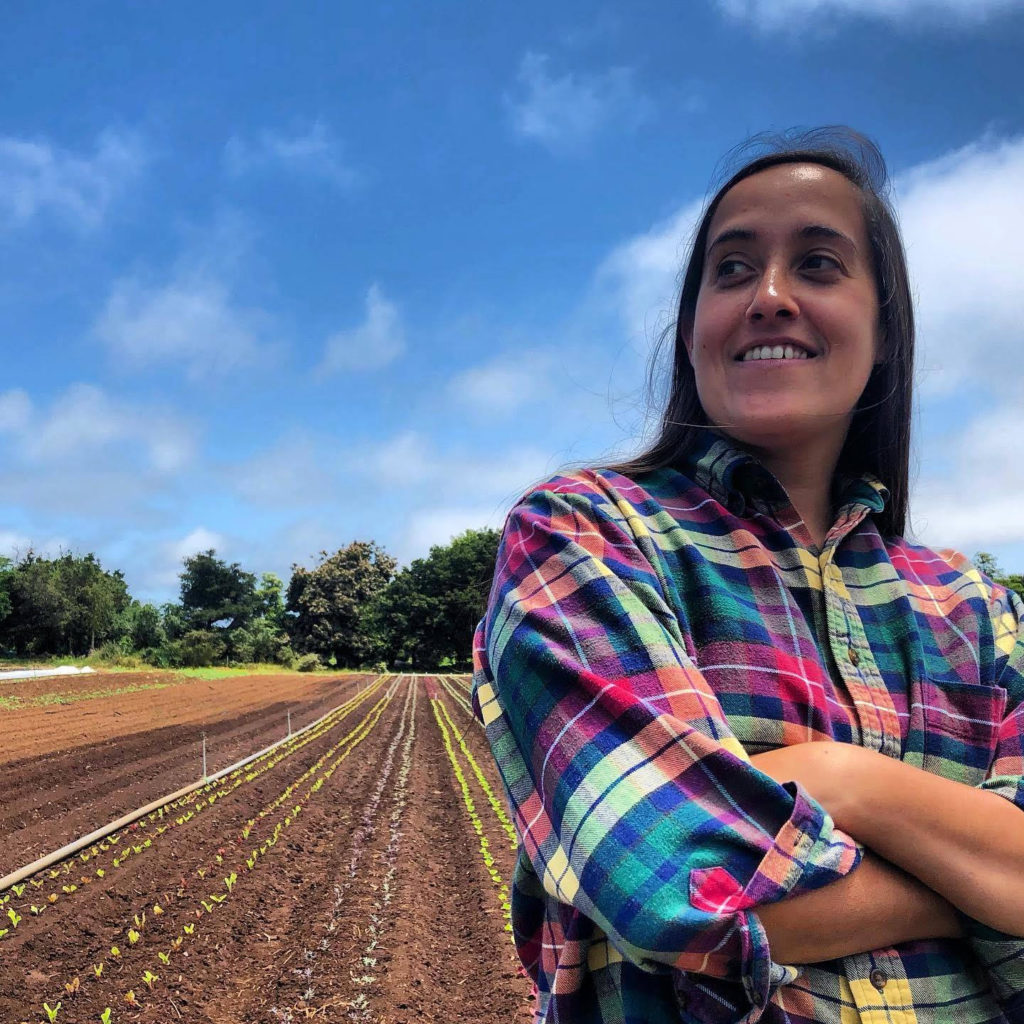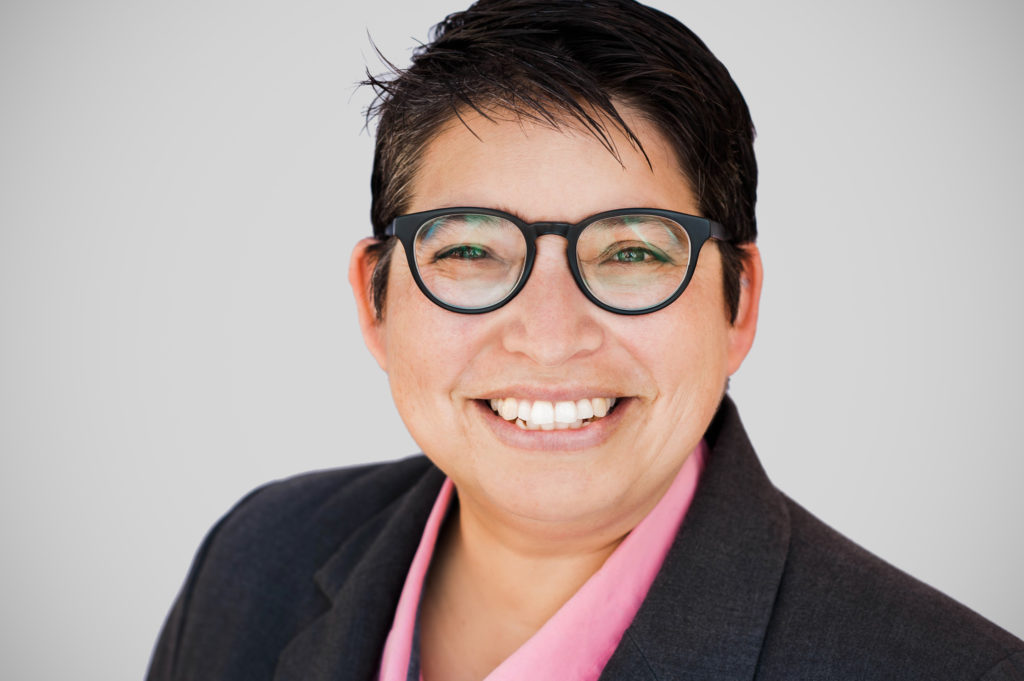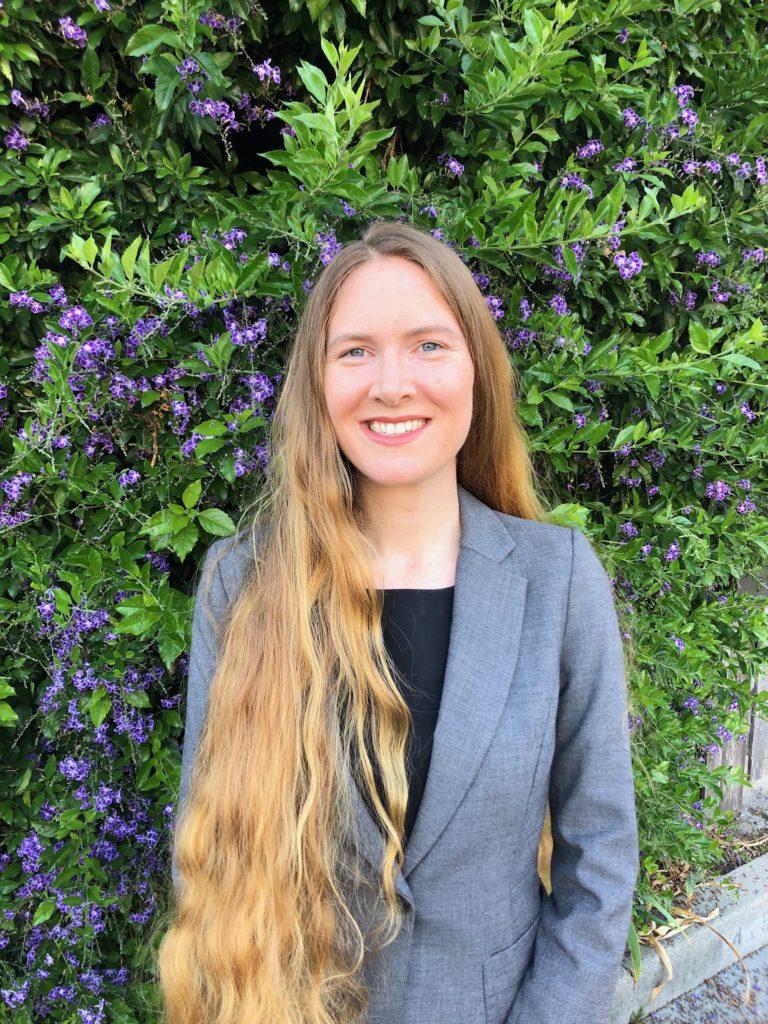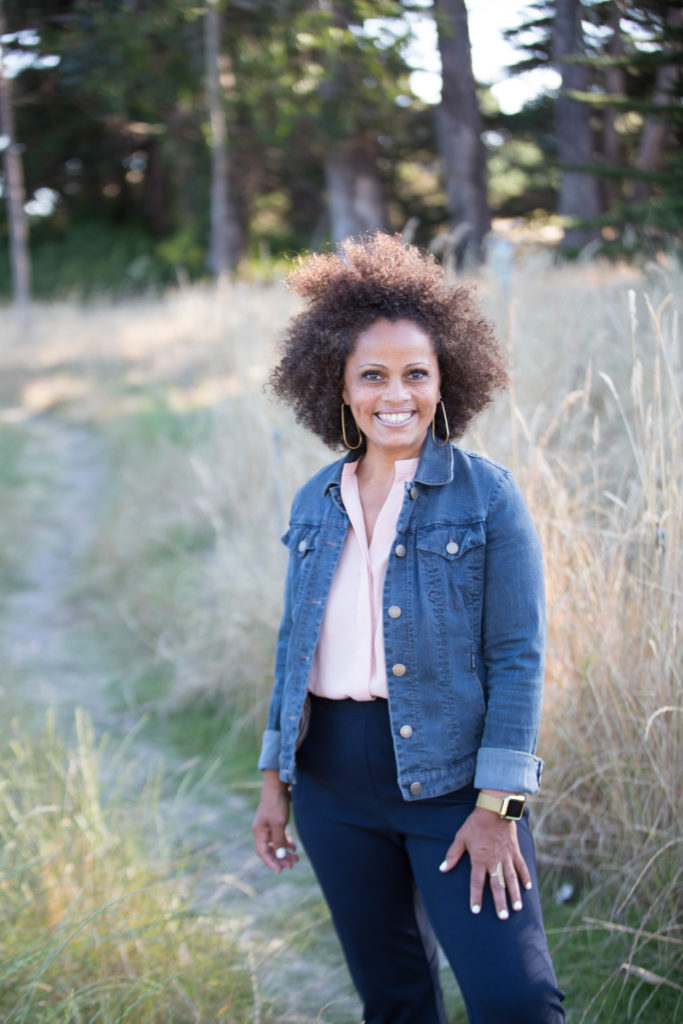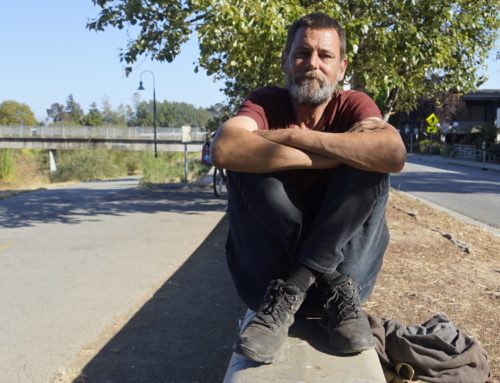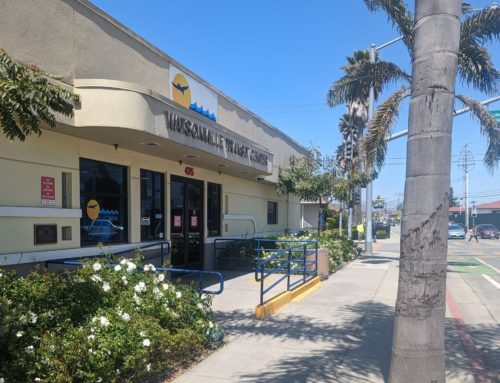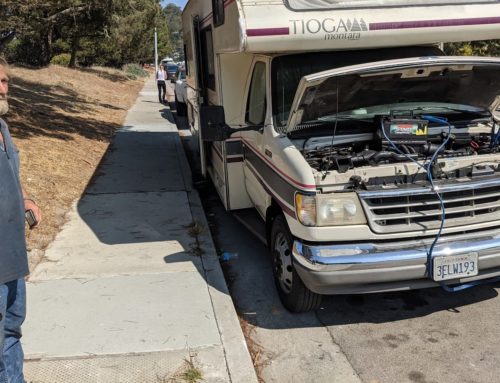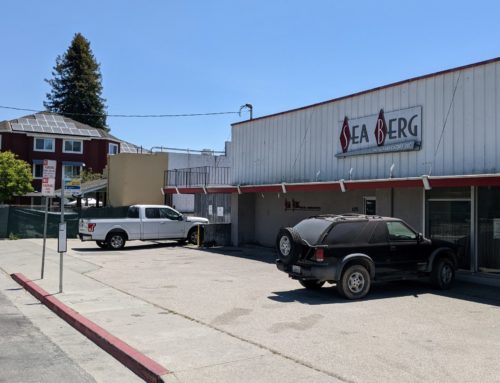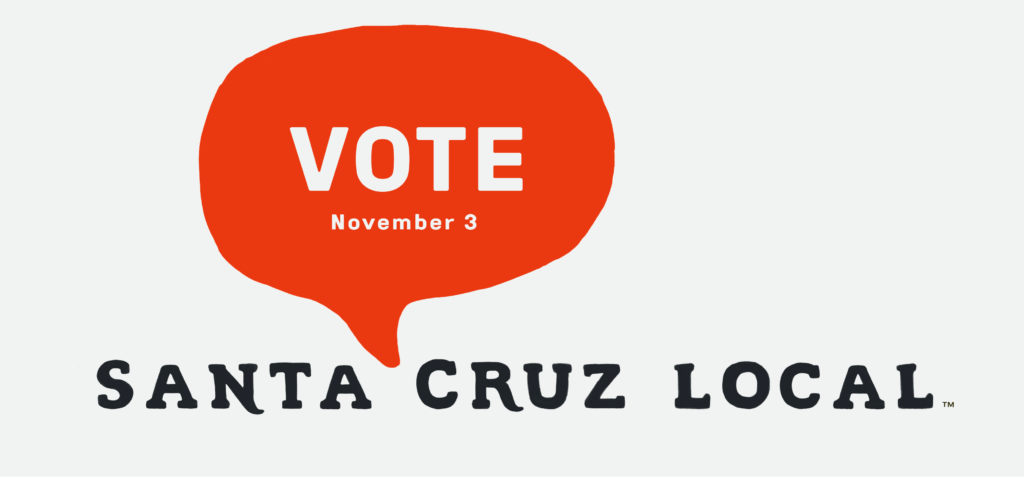
Santa Cruz Local presses the Santa Cruz City Council candidates on the priorities we heard from residents: housing and homelessness. We meet eight of the nine city council candidates: Martine Watkins, Sandy Brown, Shebreh Kalantari-Johnson, Kelsey Hill, Kayla Kumar, Maria Cadenas, Elizabeth Conlan and Sonja Brunner. Voters will pick four.
Transcript below.
Some key takeaways
On housing:
Several candidates said they supported the Housing Blueprint committee recommendations from 2018. The committee came up with 82 recommendations on themes like encouraging new housing downtown, streamlining permits for in-law units and zoning and density changes to encourage new housing.
- Martine Watkins, Shebreh Kalantari-Johnson and Sonja Brunner listed these recommendations as a key part to their housing policy.
Many candidates said they’re interested in using city-owned land — like parking lots downtown, to build affordable housing. Sandy Brown said if the city were to sell any property downtown, it should only be used for 100% affordable housing projects.
Shebreh Kalantari-Johnson was the only one who mentioned UC Santa Cruz in terms of housing policy. She said the city should work with UCSC to build more housing on campus.
On homelessness
- Several candidates said — with limited city money — they would prioritize portable toilets and handwashing stations. They were Sandy Brown, Maria Cadenas and Elizabeth Conlan.
- In our written questionnaire, we asked what parts of the Community Advisory Committee on Homelessness plan would they want to implement. Several candidates mentioned bathrooms and public hygiene there. They were Martine Watkins, Sandy Brown, Shebreh Kalantari-Johnson, Kelsey Hill and Elizabeth Conlan.
- Several candidates said they would work with county leaders to get more funding for homeless services in the city. Those candidates were Martine Watkins, Sandy Brown, Shebreh Kalantari-Johnson, Maria Cadenas and Sonja Brunner.
Read more differences between the candidates in Santa Cruz Local’s Elections Guide.
Photos by William Duncan — Santa Cruz Local
Listen to the rest of our Vote Nov. 3 elections series.
- Part 1: Start by listening (June 11, 2020)
- Part 2: Scotts Valley City Council (Sept. 30, 2020)
- Part 3: District 1 Santa Cruz County supervisor race (Oct. 4, 2020)
- Part 4: Watsonville City Council (Oct. 14, 2020)
Podcast transcripts usually are only available to Santa Cruz Local members. We offer our elections-related transcripts free as a public service. Santa Cruz Local depends on memberships from people like you to make sure vital information can be available to all. Can we count on your help?
Transcript
AD: This Santa Cruz Local episode is sponsored by Monarch Services. Monarch Services provides bilingual advocacy and resources to community members affected by violence. Sevices are free or at a low cost. Monarch Services’ team has seen a 40 percent increase in crisis line calls since mid-March. Learn how to help at Monarch S C C DOT o r g.
[MUSIC]
Stephen Baxter: I’m Stephen Baxter.
SB: This is Santa Cruz Local.
In today’s episode, we’ll meet the candidates for Santa Cruz City Council. We’ll press them on the concerns we heard from you. This spring and summer, Santa Cruz Local interviewed and surveyed more than 120 Santa Cruz city residents. We went to farmers markets, neighborhood groups and food bank distributions. And we held an online survey. We wanted to understand residents’ priorities.
We asked everyone we met: What do you want the candidates to talk about as they compete for your vote. The top two priorities we heard were: Affordable housing development and addressing homelessness. We’ll hear the candidates discuss those two themes in this episode.
The next most frequent themes were:
- Help with high rents
- Police reform
- Improving bike infrastructure and public transit
- And a need for higher-paying jobs and more job options.
You can read the candidates’ positions on those topics in Santa Cruz Local’s Elections Guide. Visit santacruzlocal DOT o r g SLASH elections.
[MUSIC]
SB: Let’s meet the candidates. There are nine canddiates on the ballot. Voters will choose four. I asked their occupation and one thing they like to do for fun in Santa Cruz. Here is incumbent Martine Watkins.
MARTINE WATKINS: My name is Martine Watkins, and I work at the Santa Cruz County Office of Education. And my title there is senior community organizer. But I mainly work in student support services on a number of different prevention and intervention programs for special populations. And I’m also a current city council member on the Santa Cruz City Council.
And one thing fun that I like to do in Santa Cruz. I learned I’ve been learning how to surf. So I’ve been surfing at Cowells with my daughters. And it’s been really fun. And I wipeo out a lot. But you know, it’s great.
SB: Our first question. Many residents said they want more options for housing, many said they have friends and family who’ve moved away partly because of lack of options. What is your plan to create more housing options for residents?
MARTINE WATKINS: I, too, have had friends move away for just the inability to make it work here with housing. I participated on the Housing Blueprint Subcommittee on the council back in 2017. And through community outreach, we really came up with specific policies that were supported by our community members to not only, one, preserve our existing housing that is affordable, two, produce more affordable housing, and three, maintain community vitality, all the while incorporating community outreach and community voice in every process. And so that’s essentially looking at how do we streamline the production of ADUs (Accessory Dwelling Units) that was something our community really wanted to see done. We really worked on through our downtown amendment really looking at how are we getting people closer to their places of work and building more at smaller units in our downtown. That was another community supported initiative. And then the community vitality bits are thinking about how are we for like, for example, doing a childcare developer fee, so that when we have more building that there’s this little bit of money that can go to to support childcare facilities, so really looking holistically about community vitality, and what is sort of just this imbalance of a cost of living.
SB: City law requires housing developers to offer 20% of a project’s housing units, at lower prices to people with lower incomes. The prices are based on the area median income.
That 20% requirement is called an inclusionary rate. The council increased it last year from 15% to 20%. Watkins voted against that increase.
We asked Watkins how supportive she is of market-rate housing.
MARTINE WATKINS: I want to get as much affordable housing as possible. It’s really interesting. I, you know, one of the things that we have to do is really sort of try to follow the data. For me, this is where I go is, how do I understand what is that like, really? Like? What’s that level where, you know, what, either by a nexus or a feasibility study where you can say, OK, this is if you get this much density, you get this, like, you can optimize this much affordability, and then go with that. I mean, the reality is, there will be ways we can produce more affordable housing only. But there’s, there’s a lot of there’s not that we can’t do it all. So we have to look at how are we balancing that with market-rate housing to offset those costs, and I’ll continue to apply that kind of data- driven lens and community input in the process to ensure that we’re moving in the direction of producing more affordable housing.
SB: Here’s our second candidate, incumbent Sandy Brown.
SANDY BROWN: Hi, I’m Sandy Brown. I am 47 years old. I’m an instructor at San Jose State University and a current city council member. And one of my favorite things to do in Santa Cruz is hike in the Pogonip.
SB: Here’s Brown on her plan to create more housing options for residents.
SANDY BROWN: I think that the major issue that we face is an affordability crisis. And so looking at higher density and different housing options, making ADUs easier to build are important ways that we can address that challenge. I think that we need to be very deliberate about ensuring that there is as much affordability built into those projects as possible, because simply having different housing choices is not going to make housing affordable for a lot of folks who live and work here.
I think we have some real opportunities in the downtown area to one, use the 20% inclusionary zoning policy that I took a leadership role in supporting, and use that as a way to get additional units built. In some of the new projects, we’re seeing a lot of applications come in for an interest in building in the downtown. So I think that I’m using that regulatory framework will help us. I also think that we should be looking at city-owned properties, and using those for 100% affordable housing projects, using those to leverage additional resources, the kind of layering of resources needed to make those projects happen.
That’s not a controversial thing. I think most candidates support that. For me, though, the issue is that we need to be prioritizing that for all of the property that we own in Santa Cruz in the downtown area, rather than kind of using some of those lots to leverage market rate housing, which is the direction I see us going or I see the kind of leadership going, I think we need to rather than dispensing with those, those surface lots, we need to actually use them for affordable housing projects.
So I worry that while it’s something that we all support, it’s limited support. It’s limited to some of these bigger projects that are more high profile. And I’m concerned that some of those may not even happen. So I just want to make sure that we use the opportunities we have before they’re gone.
SB: We asked Brown how open she is to proposals for market-rate housing.
SANDY BROWN: Well, there’s a difference between what I support and what can actually be achieved. So, you know, if it were up to me, it would be 100% affordable units, at 50%, of (area) median (income) or lower, I think that is really the area we we are most lacking. Now, the reality is that we are, we don’t have the authority to require that, regardless of whether we want it. And so I think that, for me what that what it looks like is pushing to make sure that developers when they’re bringing these proposals to us, are demonstrating that they are making a significant effort to include affordable units. So for example, you know, using the formula for in lieu fees, and land swaps is allowable. And we can’t, we cannot require building on site. But we can say for example, if you want to pay in lieu fees, we’re going to make that a higher percentage. And so the formula, the contribution you make will actually help us get units built. So that’s the kind of policy that I’d like to pursue moving forward as well.
SB: Let’s meet Shebreh Kalantari-Johnson. I asked her occupation, what she does for fun and her plan for housing.
SHEBREH KALANTARI-JOHNSON: My name is Shebreh Kalantari-Johnson. I’m 43 years old. I’m a grant writer and do leadership capacity building and organizational development. Um, go to the beach with my boys — my sons and my husband and my dog.
SB: What is your plan to create more housing options for residents?
SHEBREH KALANTARI-JOHNSON: My plan for creating more housing options for residents is first to really align with our general plan housing element and our Housing Blueprint. There are a number of projects that are outlined in those plans that I think if we put our heads together, we can move forward with it. I know that there are projects in the works are ready for affordable and a range of housing options. I would pursue those projects make sure that they are seen through,
I would also look at other areas. I think one of the first things we need to do is inventory the space that’s available in our community, and move from there and see what’s possible in terms of building mixed-use density housing. I mean, we have, we have a numbers issue in our community, like many other Central Coast communities, so we have to build. And we have to build density housing, we have to build for a range of incomes, I too have friends and colleagues and neighbors who’ve moved away, who are social workers and firefighters and teachers.
I think some of the other things that we can also do is look at our zoning ordinance. I know that it’s outdated, and I’m making some changes to our zoning ordinance may allow for some additional mixed-use housing.
And the other thing that we can do is to partner with our university here, UCSC. I think that we can get creative. And I think that we can build more housing on campus for the students and faculty and staff that are there, and that are due to come in the future years. And all of this will, of course, require some outside funding. So I think we need to be really, really aggressive about looking at state and federal funding resources to bring into our community to make this happen. And this is something that, that I’m good at that I’ve done, I brought in outside resources for many projects for our community.
SB: Here’s what Kalantari-Johnson said about her stance on approving market-rate housing. She wrote this response in our written questionnaire. “While these range of housing options are a priority, some market rate housing is also needed to ensure that we can afford housing projects, include a diverse range of residents in our community, and align with our General Plan Housing Element.” Close quote.
Our next candidate. Kelsey Hill.
KELSEY HILL: My name is Kelsey Hill. I’m 27 years old. I’m a social media specialist and intern director at the Romero Institute. And one thing I like to do for fun. I like to go to movies at the Del Mar (Theatre) when it’s open.
Housing is obviously an extremely important priority for anyone who’s sitting on the city council dais. My plan is to push forward projects that have the maximum amount of affordable units in every project possible. I’m interested in pushing forward projects that have 100% affordable units on city-owned land. That’s deed restricted units.
And then also, you know, as the housing crisis continues into this COVID-19 recession, it’s really important to me that every project that crosses the council dais, we look at making sure that we are approving projects that have deep affordability for low, very low and moderate income levels.
SB: On market-rate housing, Hill wrote in our survey, QUOTE “I understand the deep complexity of this issue and will work with my colleagues to bring developments forward that may not meet my ideal criteria for affordability but are environmentally sound and create an acceptable amount of access to housing for some moderate to very low income families. I believe that the downtown space is the best location to build density and am encouraged to see projects in the pipeline that can house folks near jobs and transit.” CLOSE QUOTE
Here’s our next candidate, Kayla Kumar.
KAYLA KUMAR: My name is Kayla Kumar. I am 31 years old, I work at a place called Food What?!. I’m the development director there. And something I do for fun. And, you know, every year I write a Christmas album of original Christmas songs. It’s actually not as fun as you would think. Now that I’m — but that’s my that’s my fun project every year.
SB: Here’s our question again: Many residents said they want more options for housing, many said they have friends and family who’ve moved away partly because of lack of options. What is your plan to create more housing options for residents?
KAYLA KUMAR: The first thing I want to say is, I empathize 100% with those folks, I’m in the same boat, I’ve say goodbye to too many people. And, you know, it’s, it’s really hard to see. And it’s really hard to be a part of. And I also understand how frustrating and sometimes it feels like there’s no work being done. And so I just want to start by saying, I totally feel that.
It’s one of the things that drive me — I come from a place of just being tired of hearing the same old thing. And wanting to get in there and try something new on, something new and better. And so I hear the same thing, I think, you know, we have, we have a lot of the parts in place. And a lot of innovations are also happening here locally that maybe I can get into.
But what I really see — you talk to staff, you talk to local financial institutions, you talk to developers, is really, I think a lack of consensus, vision, direction, North Starring whatever you want to call it from the city council. Where do you want us to start? Where do we start? So for me, and you know, I look to really the RHNA (Regional Housing Needs Assessment) numbers, I think, are a really good piece of data or data set to look to and, and those numbers are handed down by the state, I won’t go into too much what what they are, but what what they show here in Santa Cruz is that we have a significant shortage. In particular, parts of our housing stock that is for very low income folks, low income and moderate income folks, actually as well.
And so I come from a place where I couple all of those stories I hear too, Stephen, from folks that are like, we need options, why can’t we get options to live in our hometown, with the data from the RHNA numbers of OK, where is like, where is the the strongest lack of housing options? And, and for me, I say, let’s start there, let’s start at those levels who are experiencing this housing crisis the most, and start developing units that meet those specific needs and work from there, right.
And so, there’s a lot of work to be done that doesn’t, you know, it’s, it’s, we need that direction, we need a council to say, this is what we’re going to, this is what we’re going to do. And then it certainly just gets more complicated from there. But there is stuff we can do. Right, you know, the city has land. We can be using that land. We can be partnering with nonprofit developers who have a model of developing that can align with this development of income levels that are on the lower side. And, you know, help out of economic development department, we have absolute ninjas who can help developers navigate the many layers of financing as well. And so so that’s that’s just to give your listeners a little bit of a sense of how I think about these issues where I would start on and what my values are.
They call me to think of those who you know are bearing the brunt of crisis those who are most vulnerable and and care deeply for the well being and make decisions from that place and work out from there.
SB: I asked Kumar how open she is to market-rate housing.
KAYLA KUMAR: I mean, Stephen, it’s so hard to answer that question because all of these projects really are genuinely unique. And so it’s hard for me to broad brushstroke with something that is so nuanced, so complicated, and so reliant on ever-shifting conditions.
What I will share is that I’m I am by no means someone that believes that all building is bad. And I’m also not someone who thinks all building, no matter what, is good all the time. And so so that leaves me in the gray, for sure.
And, and I also think the gray is where these solutions are going to happen. We need council members who are willing to embrace and get their hands dirty into the gray area here, into the nuance, into the details, the complexity. And you know, so I hope that that it’s just it’s too hard to answer that question without perhaps in lieu of a menu of projects that you want to talk about.
SB: Next candidate. Maria Cadenas.
MARIA CADENAS: My name is Maria Cadenas, I’m 42 years old. I’m the executive director of Santa Cruz Community Ventures, which is a 30-year-old nonprofit in the region. And the thing that I do for fun is I love hosting radio shows. I’m part of the women’s radio collective. And we do Sunday mornings, Music by Women for Everyone at KZSC. Although I’m taking a little break now as part of the candidate, I can’t continue that. But I’ve been volunteering in public radio, gosh, since college.
SB: What is your plan to create more housing options for residents?
MARIA CADENAS: When we look at the level of volume of available housing, we really haven’t kept up in the need of housing for the region. And we do have a lot of benefits of living here, including decisions made to the size of city that we wanted and areas for development. But we have a large stock of single-family homes. And I believe that we can definitely look into land use and zoning policy that allow some of those single family homes to become duplexes in those lots.
We can also look at continue to support the ADU development, but tied to affordability so that we don’t end up with I would say market rate use which only continues to push forward. I really look for affordable to use both in the low income, extremely low income, but also for the middle market, so nurses, teachers, making sure that we do that.
I am also a big fan of looking at downtown, I see downtown as our commercial and cultural center. The heart of our city. And there’s a lot that we can do if we can reimagine the use of our land downtown encouraging, including our surface (parking) lots. So I would love to see the mixed-use buildings, more density, that allows for actually walking downtown where people who live there also work there and can partake in all the cultural spaces that downtown can offer. So I think that we need to look at, you know, tying it to public transit, denser communities, mixed-use buildings and downtown looking at zoning and land use, also in downtown, but also in single-family areas where appropriate to look at duplex development and the extension of the ADUs.
At the end of the day, the issue is that it will take a lot of work from many different fronts to not only look at the diverse type of units we have, you know, there’s been conversation of like, multifamily housing, you know, with shared kitchens and other spaces as well. But also just the volume, like how do we get there.
And I think we can do that while keeping who we are at core. I mean, we are a Central Coast town. We’re a small town, or city really, but you know, I grew up in Ensenada (Mexico) which is also a small city, by the ocean. And at the time that I grew up there, it was agriculture and, and you know, the fisheries that really kept the town going. I think, in Santa Cruz, we want to keep that spirit of who we are.
But we also have to take steps to house and provide a home for those that make Santa Cruz great. And these are neighbors that have been living here for over 20 years who are overcrowded, or families that can no longer be your parents or grandparents, because they can’t find a place to live.
SB: Here’s Cadenas’ views on market rate housing
MARIA CADENAS: I believe strongly in prioritizing affordable housing, and that we need a mix that fits our workforce housing mix that we need in Santa Cruz. I will say that I’m not an advocate that believes that development alone will take care of affordability. If that were the case, that would have happened decades ago. But in housing, we have huge gaps in terms of class, race and gender, in terms of ownership. And I don’t think building alone will address those gaps. So we really take an equitable approach and a housing fit mix to how we develop Santa Cruz.
It doesn’t mean that precludes us from doing market projects, but it does mean an onus on both being very proactive in seeking development opportunities, but very explicit in prioritizing affordable housing.
SB: Here’s candidate Elizabeth Conlan.
ELIZABETH CONLAN: My name is Elizabeth Conlan. I’m 32 years old. I work as a scientist. I study berry crops for Driscoll’s in Watsonville. And I am an avid hiker. And I like to hike in Wilder (Ranch State Park) and in (Henry) Cowell (Redwoods State Park), Pogonip. Lots of great options around here.
Housing is one of my key priorities. And my work in housing advocacy is one of my main drivers in deciding to run for city council. I, as a renter, I am confronted with a lot of the housing issues, affordability availability that people in the city are. And if elected to council, I will work to both increase the opportunities for more deed-restricted affordable housing, through policies such as using city-owned land downtown, and then also approving mixed-income projects around the city.
And then I also really want to tackle the shortage of middle class housing. And I think there are a lot of interesting ways we can do this, like, rezoning parts of the city to allow for small multifamily dwellings like duplexes and fourplexes.
SB: When asked about market rate housing, Conlan wrote, Quote “I will support market-rate housing. … Combining market rate housing and affordable housing through the inclusionary rate allows for the market-rate units to subsidize the affordable ones.”
Here’s candidate Sonja Brunner.
SONJA BRUNNER: Hi, my name is Sonja Brunner and my age is 50. I’m the operations director for the Downtown Association. I oversee all the programs in the district, including the information kiosk and the downtown ambassador program. One thing I like to do for fun, there’s many, but definitely I roller skate dance. And I like to stand-up paddleboard.
When it comes to housing, it’s a big reason that I work in my community in the ways that I do. I— just to give a quick background. I grew up from my early 20s here in Santa Cruz to now. And my son was born in the mid 90s and I was a single parent. And it was very difficult. And I was very grateful after six years of being on a waiting list, I became eligible for a low-income public housing. That saved me. But it also took six years on a waiting list. And that is unacceptable. And at this point, our waiting list isn’t even open.
And so I’m supporting what we have. Existing programs is going to be really important, working with the Housing Authority. I sit on the Housing Authority Board of Commissioners, and so I’ve really developed a really great understanding of the various federal and state programs. And funding sources and subsidized housing and different programs that address the different needs for homeless individuals, to vets, to families and, and individuals. So that will be important, it will also be important to, you know, use the, the Housing Blueprint as a jumping off point, so to speak for, you know, rather than reinvent the wheel, already, the city has worked on this housing element, and to really expand on those programs and keeping the existing affordable units in that program.
Also saying yes to development that includes housing and, and not just affordable housing, even though that is my focus, we really need housing available to people across a full range of incomes from young adults just starting out to seniors who, you know, are on a fixed income. And that middle income is — for teachers and nurses and, and everybody to be able to work and live in our community — is going to be very important.
I have a lot of detailed ideas to explore, and it will be really important to just really work and listen and collaborate with all the, you know, Community Action Board and all the organizations that are working on this. It’s a national crisis. So what can we do as a city are are very specific tools that we can to support housing so that people don’t have to move away, especially those who have who were born and raised and have grown up here and their children and, and it’s just becoming increasingly more expensive.
SB: The last candidate, Alicia Kuhl, declined our requests for an interview. We can tell you a bit about her though.
Kuhl is the president of the Santa Cruz Chapter of the California Homeless Union. She’s 41 years old.
I heard her speak at the Monterey Bay Central Labor Council’s candidate forum back in July. There, she said that her top priorities are housing, tenant protections and an eviction moratorium.
On homelessness, Kuhl said she knows the impact of homelessness firsthand.
She supports an increase in public health and sanitation services. She also wants to establish a mobile crisis unit so that trained mental health staff could respond to crises instead of police.
We also asked the rest of the candidates about homelessness. This was our second main theme.
Our question was: In the context of a shrinking city budget, how will you prioritize emergency homeless services in the coming year? What kinds of homeless services would you prioritize?
Here’s Martine Watkins.
MARTINE WATKINS: There’s a couple of things I’d say about this. The first is one, we’ve had a lot of resources come into our county from the state in regards to supporting really the public health necessity associated with COVID. Right? And so how are we not losing traction that we’ve had to mobilize as a county to really get the resources to our homeless population?
The second is, you know, how are we using this moment also, to redesign how we’re supporting and doing the best we can to one prevent homelessness from occurring in the first place? And two, to really look at our services and programming to really get people the resources, they need to ideally get out of homelessness.
So what we do in the interim is really mitigate the impacts associated with it. There’s certain things that the city can do, many of which actually reside at the county in terms of some of the services they need. And then we have partnerships with how things or behaviors can be criminalized in the jails and the courts.
And so it’s really a — it’s a complicated issue that requires us to work collaboratively to seek solutions. And I think we have an opportunity to really say, gosh, what we had before and what we’ve had isn’t and hasn’t been working, and how do we want to rebuild it in a way that’s going to work to see people move from homelessness, to independence.
So if we, if we aren’t the core agency getting funding to support these services, so we have to leverage our partnership with the county to receive those funding. I mean, those funding sources are critical. We have to maintain our basic infrastructure. So there will, you know, when we have to think about prioritization for our budgets, we have to maintain sort of understanding of really what is essential for — we need to have a functioning fire department, police department, water system, etc.
But that being said, we also need to think about the mitigations in the public health of our residents, including those who are residing in our community that are unhoused. And so mainly, it would likely be, how do we maintain some of the mitigations. But ultimately, we have to work with our county and we have to work with other funding sources to ensure that we’re addressing the homeless needs holistically. And and we do leverage, we do leverage funding sources, and we’ll continue to try to do that. But everybody’s going to be a little bit, you know, cash strapped, right.
SB: Sandy Brown, on what kind of homeless services she would prioritize.
SANDY BROWN: I think that the city has a important role to play in addressing homelessness issues, the issues affecting our unhoused community members.
While it is not the charge of the city to be responsible for those services, I do believe that there are things that we can do, working with the county and kind of helping to, you know, encouraging the building out of the county’s program, I think, is really important. I’m glad that that’s moving forward in a more meaningful way. But at this, with the city, I think that we you know, we use a lot of resources, kind of moving people around, that kind of our move along policy is issuing citations that never get paid.
And I think we ought to be investing more of those resources into a hygiene facilities s you know, helping to create spaces where people can be and have some stability, we know that that is one of the most fundamental things when people have a stable place to be to keep their belongings and not feel like they’re, you know, constantly on edge and you know, without, you know, any structure, that is when people’s needs are getting met, that’s when they kind of can can start to move forward with their lives. So, hygiene facilities, mobile showers, charging stations, all of these things are basic kind of infrastructural, certainly not not major capital infrastructure, but things that we could be supporting. That would, and it certainly would be better I think for, you know, the downtown in general and neighborhoods if people have places that they can be safely.
SB: Shebreh Kalantari-Johnson. What kinds of homeless services would you prioritize?
SHEBREH KALANTARI-JOHNSON: Homelessness is an issue that I’ve worked on over the last two decades. And I’ve done it, entered from many different points from doing direct service to grant writing, to strategic planning on youth homelessness that most recently I run in a grant of over $2 million that will continue on in our community, a million dollars a year to address youth and young adult homelessness. And I supported the strategic planning process and then I now help coordination of implementation. And then last month, I served with that county emergency response team to help find a safe place for these young people to shelter in place. That’s a little bit of background about me. So I know the issue of homelessness intimately. We absolutely need to address this growing problem.
One of the things we need to do is to partner with our county departments and with our county board of supervisors. They have resources and they also work with individuals like myself to bring in outside resources, federal and state funding, we won’t be able to do this alone as a city, we won’t be able to do this alone with one jurisdiction. We have to work across the four cities and the five districts in our unincorporated areas to address this problem.
And in terms of strategies and prioritization: I think that oftentimes we forget about the preventative upstream approach. Of course, we need to deal with the crisis that’s visible. And right there, people are suffering people on the streets. And it’s impacting quality of life, both for those who are unhoused and for community, residents and neighborhoods. So I absolutely have to address that. One of the strategies that’s been found effective are navigation centers, that help put individuals on a pathway to services and housing. But when I’m talking about upstream, and I’m talking about the young adults that I’ve worked with. So that’s, I think, an area that we as a community, the whole county, and certainly our city can put a little bit more focus on.
KELSEY HILL: This is Kelsey Hill, again. So homeless services are extremely important to me because if we cut houseless services and services that provide resources for people who are struggling to meet, make their or meet their basic needs, I want to make sure that in budget cuts, moving through the COVID-19 recovery, that we keep those essential services intact.
I am interested in pursuing outside grant funding, looking at partnering with nonprofits partnering with the resources and the infrastructure that already exists. To serve houseless needs, and making sure that if we make cuts in the budget when we make cuts in the budget rather, rather that we are not making cuts that will disproportionately impact people who are already struggling. I’d like to do this by cutting places in the budget that don’t have a disparate impact on people.
So first tackling budgetary bloat, looking at high consulting fees, looking at places that are sending dollars outside of our city versus using dollars internally, and basically, you know, empowering the infrastructure that we already have here because we have tons of momentum and people who care about this issue organizations that their goal is to — faith organizations, community organizations — with goals to house people, keep people fed, keep people clothed.
And so I think that we need to look into empowering the people that are already doing this work and being able to ramp up their resources. Because as we know, economic recessions tend to push people farther into the struggle that they’re already experiencing and widening the gaps of inequity in our society. So it’s really important to me to make sure that our houseless services remain intact and funded.
KAYLA KUMAR: Kayla Kumar. And the way that I approach the contraction, inevitable contraction of the city budget is to be making a contraction that begins as furthest away from social services that meet the needs of those most vulnerable, again, those who are impacted by the crisis in a particularly brutal way.
And so this is a great question it — it does reflect — I would prioritize funding social services that meet this particular vulnerable group, those experiencing homelessness. And then of course, there are many other groups. And so, um, I think, I think some of the ways that we can think about the way the city can contribute to the endeavors I mean, the city is, apologies, the county has done great work, actually, I think in building up this infrastructure, that’s, that’s popped up here, around the COVID-19 crisis. And I would like to see the city, doing what we can to, to learn what’s going on in those infrastructure, and that infrastructure, collect the data that we need to understand, look at it, study it, understand where are the gaps, where do we need to grow, and then invest funding into whatever piece of that program, whether it’s programming for housing, navigation, whether it’s programming, for mental health support, substance abuse, all the various things that, you know, could could be experienced by someone experiencing homelessness, although, of course, we have to talk about too, Stephen is that, you know, about 70% of the people who are experiencing homelessness in the city, lived in Santa Cruz (housing advocate and president of New Way Homes Sibley Simon told me). They lived in a dwelling and they either had an unexpected payment come up or something happened, they got laid off, and they lost their housing. So we also have to understand as a city, that we have really clear, again, infrastructure to prevent people from experiencing homelessness as well.
The city has done well, I have to commend the folks on the city council who have who have advocated for this, to develop a rental assistance pipeline that is essentially funneling much needed rental assistance to those most in need. And again, we can continue to collect the data, understand where these funds going, always, we need to refine and make sure that we’re meeting the biggest needs here locally. But we can do that. I think we can really do that. We have great partners in the nonprofit field. And so those are, those are a few things that come to mind. And again, it’s when we think of, you know, folks who are experiencing homelessness, there’s so many different experiences, there’s so many reasons, different reasons for it. So having this kind of nuanced, comprehensive, prevention, intervention and wraparound model, I think is is going to be the key in partnership with the county.
SB: Applied Survey Research asks homeless residents in its annual point in time survey, What was your last address before you were homeless? Last year, 74% of respondents said their last address was in Santa Cruz County.
Here’s candidate Maria Cadenas. What kinds of homeless services would you prioritize?
MARIA CADENAS: In terms to our unhoused neighbors. What we seen prior to the pandemic was initiative efforts like the CACH (Community Advisory Committee on Homelessness) commission, right, which was really looking at how can we have community informed plans around dealing and partnering with solutions for unhoused neighbors.
When the pandemic hit, that disrupted that process a little bit. And it was really because we needed immediate responses that led to quite frankly, I think, really good partnership with the county, really good partnership with the state. And in more resources, you know, Project Roomkey and other issues that were being done, the mobile showers, the managed camps, you know, there was a lot of efforts that were done quickly as part of the pandemic to get people housed, have social distancing, and provide the quite frankly, public health concerns that we needed to have.
I think that we have to look at the findings from CACH, right, and what did we learn from that process? What can we learn from the immediate response, and as well as continue to enhance the partnership with the county. The county has received money, including CARES Act money, that definitely can help address the immediacy of unhoused neighbors but can help us structure how we’re going to move from now to longer term.
In terms of the budget deficit, you’re right, we have a deficit. It limits our ability to save dollars. But there’s dollars there’s actually state dollars that are building on Project Roomkey, now Homekey, you know and other tools that we can aim to bring dollars regionally at the county level. And considering the overburdened need in the city of Santa Cruz for unhoused neighbors, I think the county and the city should work hand in hand and find the solution. And working very closely with community.
The priority in my mind in the short term is public health — sanitation, portable toilets, showers, and then and quite frankly, finding safe space for our unhoused neighbors to sleep. I think that that’s where our priority should be in terms of dollars in the short term with very close partnership with the county.
SB: Elizabeth Conlan.
ELIZABETH CONLAN: Continuing to provide services for the homeless population is essential. I know that we are facing budget shortfalls, but unfortunately, a lot of the money that currently goes to homelessness services is reactive instead of proactive.
So I think that we really need to shift the paradigm in order to provide more money, that will actually start addressing some of the root causes of homelessness. And also, you know, again, be more proactive. So providing bathrooms and sanitation, I think in the long run will be less expensive for the city, then dealing with waste, dealing with possible disease issues, especially since we are dealing with a pandemic.
I think that getting people housed, while may, will be a bigger cost up front, I think in the long term, will will save the city money and services. So I really want to look into those options so that we are investing for the long term and not just continuing to react.
SB: Sonja Brunner. In the context of a shrinking city budget, how will you prioritize emergency homeless services in the coming year? What kinds of homeless services would you prioritize?
SONJA BRUNNER: I’m learning a lot about this budget and what I’ll be stepping into, and our city budget must prioritize resources and services for, you know, our most vulnerable community members. And, um, what that looks like, I’m still learning and I can tell you that each department has been tasked with recommended cuts and eliminations. And, you know, when it comes to homeless services, a lot of what I’m learning about comes from county health and human resources and funding there have and so really working with the county on I know, the county has their own cuts and and budget that they’re dealing with.
So working together to really make sure that those experiencing homelessness are, you know, and, and those vulnerable or keeping people in their homes and those who have lost their jobs and, and really making sure that there are their support for that as well. A centralized navigation center is the goal. Streamlined resources in one location. So that case management can happen because a lot of of the behaviors and activity around homelessness, besides the support, there’s also mental health and substance abuse issues that need support. So looking at federal and state funding to reduce impacts on the most vulnerable. And, you know, overall, with the budget, really, I support utilizing the city reserves, which were established for this type of crisis scenario that we’re looking at.
[MUSIC]
SB: OK, let’s summarize some of the key similarities and differences between the candidates.
Several candidates said they supported the Housing Blueprint committee recommendations from 2018. The committee came up with 82 recommendations on themes like
- Encouraging new housing downtown
- Streamlining permits for in-law units
- And zoning and density changes to encourage new housing
Martine Watkins, Shebreh Kalantari-Johnson and Sonja Brunner listed these recommendations as a key part to their housing policy.
Another thing. Many candidates said they’re interested in using city-owned land — like parking lots downtown, to build affordable housing. Sandy Brown said if the city were to sell any property downtown, it should only be used for 100% affordable housing projects.
Shebreh Kalantari-Johnson was the only one who mentioned UC Santa Cruz in terms of housing policy. She said the city should work with UCSC to build more housing on campus. Really a lot of that comes down to state funding.
Another key difference in the candidates: Where do they stand on the downtown Santa Cruz mixed-use library proposal? We asked them: “Do you support the downtown library mixed-use project as proposed? That project calls for a library and no more than 400 parking spaces and at least 50 affordable units on Cedar and Cathcart streets.”
The candidates who support the downtown library as proposed are Sonja Brunner, Elizabeth Conlan, Martine Watkins, Shebreh Kalantari-Johnson and Maria Cadenas. The candidates who do not support it as proposed are Kayla Kumar, Kelsey Hill and Sandy Brown. Alicia Kuhl did not respond.
You can see a grid showing these differences, and more, at santacruzlocal.org/elections
On homelessness. Several candidates said — with limited city money — they would prioritize portable toilets and handwashing stations. They were Sandy Brown, Maria Cadenas and Elizabeth Conlan.
In our written questionnaire, we asked what parts of the Community Advisory Committee on Homelessness plan would they want to implement. And then several candidates mentioned bathrooms and public hygiene there. They were Martine Watkins, Sandy Brown, Shebreh Kalantari-Johnson, Kelsey Hill and Elizabeth Conlan.
Separately, several candidates said they would work with county leaders to get more funding for homeless services in the city. Those candidates were Martine Watkins, Sandy Brown, Shebreh Kalantari-Johnson, Maria Cadenas and Sonja Brunner.
Keep in mind, our elections page and transcript of this episode contain all this information.
[MUSIC]
SB: Santa Cruz Local dot org has much more information about the Santa Cruz City Council race. Check out Santa Cruz Local’s comprehensive local elections page at Santa Cruz Local DOT O-R-G SLASH elections.
Santa Cruz Local’s journalism free for everybody. But our work costs money to produce. This episode, for example, took months to produce.
Our work is supported by Santa Cruz Local members. Our members make recurring monthly or annual contributions. They start at $9 a month or $99 a year. Thank you to our more than 640 Santa Cruz Local members. You make our work possible.
Thank you especially to our guardian level members: Debra Szeicei. Chris Neklason, Patrick Reilly, Elizabeth and David Doolin, and the Kelley family.
Santa Cruz Local depends on memberships from people like you, so we can offer our work free for all. Will you support local news with a Santa Cruz Local membership today?
Thanks to Trimpot for the music. I’m Stephen Baxter.
Thanks for listening to Santa Cruz Local.
AD: This Santa Cruz Local episode was sponsored by Santa Cruz Works, your connection to our area’s thriving tech and business community. With over 5,000 members, Santa Cruz Works gives you access. The largest monthly tech events. Solutions for your startups and businesses. Connections to the hottest jobs. And the latest news about local companies: their stories, and best practices. Subscribe free to the Santa Cruz Works weekly newsletter today. Santa Cruz Works DOT org.
Editor’s Note: Attribution was added to Kayla Kumar’s statement on the number of homeless residents with prior addresses in the city of Santa Cruz.
Stephen Baxter is a co-founder and editor of Santa Cruz Local. He covers Santa Cruz County government.
Kara Meyberg Guzman is the CEO and co-founder of Santa Cruz Local. Prior to Santa Cruz Local, she served as the Santa Cruz Sentinel’s managing editor. She has a biology degree from Stanford University and lives in Santa Cruz.

